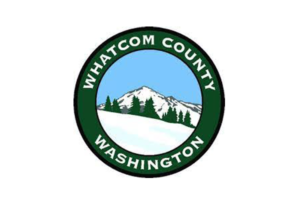Of our growing list of local food systems projects, the majority of them are focused on how to best help move local specialty produce into more wholesale markets. We love this work, and it is incredible to see how this landscape of local produce intermediaries has evolved and matured over the past six years.
But we’ve been closely tracking the rapidly rising focus on grains in the local food space, driven by expanding demand for ancient and organic grains, the nationwide explosion of microbreweries and microdistillers, and the onset of artisan bakers taking pride in quality ingredients.
Grains have emerged as an area of interest in several of our studies this past year. We recently completed our first feasibility study fully focused on local small grains, for the Livingston County Industrial Development Agency in New York State. It is an exciting project – both because we had the chance to delve deeply into the fascinating world of local grains and because we worked with such a forward thinking core team along with innovative, business minded growers, buyers and food systems leaders.
Recognizing that grains will continue to grow in relevance within local food systems, we are excited to summarize some of what we’ve come to understand about local grains.
1. Policy has been a powerful tool for food systems development
New York State’s craft food and beverage laws have been a catalyst for many burgeoning food and beverage businesses throughout the state. Specifically, in 2013, New York State adopted legislation allowing farms and craft brewers to secure a “Farm Brewery” license if they primarily source from NY state farms. The “Farm Brewery” license allows craft brewers that use products grown in New York State to receive a similar licensing discount and other incentives as the state’s farm wineries, dictating that until the end of 2018, at least 20% of the hops and 20% of all other ingredients must be grown or produced in New York State. Through 2023, no less than 60% of the hops and 60% of all other ingredients must be grown or produced in New York State. After 2024 both figures rise to 90%. This ambitious policy is expected to increase demand for locally grown farm products, as well as expanded economic development and tourism and its effects in the market are already significant and rapid.
A Cornell Cooperative Extension study showed a 2.5x increase in farm brewery licenses since the passing of this legislation, and indicates expanded interest in producing malting barley among grains producers. This growth has prompted the need for a grain center like the one assessed in Livingston County. While much of the local food movement has been driven by consumer demand for regional and farm identified products, this is a groundbreaking example of a policy that quickly stimulated growth and innovation across the grains supply chain in the Empire State.
I know everyone wishes it were just this simple – set innovative policy, and the rest easily follows. That isn’t quite true. As demand for local grains skyrockets – due to policies like the above and rising consumer interest – the unique characteristics of grains production and its current supply chain pose major challenges that are hindering growers from producing more and more grains for the local market place. Here, we describe four such challenges that are distinct to local grains….Much of it can be summed nicely as… wow, and we thought local produce was tough!
2. Science, quality and testing!
Grading and quality standards for produce are often visual, sometimes tactile, and you would be pressed to find a produce buyer waiting with a refractometer to check the sugar content of a shipment of apples. The same cannot be said for grains. Although a visual inspection of grain shipment is done, the real value of that product is dependent on a series of tests that are done to the grain, which can include DON (or vomitoxin) levels, falling number, moisture content, test weight and protein content. How the grain “scores” on some of these tests determines into which market the grain can be sold, with the largest differentiation being whether the grain is fit for human or animal consumption. This classification between food and feed grade represents a large difference in price, one that can change from year to year depending on the rainfall, time of harvest, soil condition, time of and time of fertilizer application and the type of grain. These tests are critical to be able to understand where and how grains are sold and what price they secure.
3.The fact that grains must undergo several processing steps before consumption poses unique challenges
Processors and other “middlemen” play a pivotal role within grain supply chains, much more so than in produce and even protein supply chains. Humans can’t consume most grains in their raw form. For example, after organic wheat is grown and harvested, it must be dried, graded, dehulled and then milled into flour. At that point, it must be combined with yeast, water and salt, and baked into a delicious organic bread to be sold and enjoyed by a consumer. Contrast that with an apple that can be sold basically as is off the tree, or even with proteins that can – at a minimum – require only steps of slaughter and processing. The supply chain for grains is as long, or longer, when considering the steps involved to get barley from the field to your pint glass. This means that the fairly low investment of direct to consumer channels (farmers markets and CSAs) – which have helped catalyze and grow local produce and proteins operations until they are ready to serve the wholesale channel – is not the answer for local grains.
4. The current grains supply chain structured around these required processing steps is highly commoditized and not compatible with source-identified markets
Okay, now we recognize that grains must go through a fairly complex series of processing steps. Let’s make this even more challenging – the current supply chain that provides these intermediary steps between farming and eating is designed on an international scale for massive volumes of commodity crops. Grain elevators take in and store truckloads of grains, pay a standard market rate based on weight, aggregate all incoming product in massive (thousands of bushel) bins segregated only by grain type, and then sell these grains to mammoth mills or malthouses that turn these grains into highly standardized products for sale into bakeries, breweries, consumer product companies and the like.
The infrastructure and processes of this system are only able to segregate grain by type, not by more specific characteristics – like farm, grain varietal or protein content – all of which can capture a higher price within the market if segregated. Facilitating more regionally produced, source-identified grains (the key differentiator of local food hubs, based on the USDA’s definition) across the supply chain means modifying industrial-scaled processes and infrastructure to handle the cleaning, drying, storing, milling, malting and distribution of smaller volumes (totes instead of trucks) and unique quality of these regional grains.
It is not all bad! Now for two promising insights.
5. Grains growers already “get” the value of wholesale markets and intermediaries
In produce and proteins, building food hubs is often about helping producers with predominantly direct to consumer sales access wholesale markets. In contrast, grains growers are the opposite. They operate in a majority wholesale only mindset already. In the local grains space, success will often hinge on targeting traditional commodity crop farmers and motivating them to diversify their production, to create the volume of supply needed to warrant the supply chain investments needed (as described above).
6. Market demand for New York produced grains has encouraged research and discussion around local grain supply chain solutions in the state
Encouraged by state agricultural policy, demand for New York grains is high, but unmet due to the “short” grain supply chains currently existing in the state. Many agricultural advocates, farmers, entrepreneurs and state agencies are conducting research and outreach to understand how to develop and “lengthen” NY grain supply chains. This collective body of research is analyzing the nuances of grains from seed types and fertilizer application to drying equipment and storage. A successful local grain supply chain will likely have to wed both large-scale and small-scale equipment which will need to be designed and vetted by industry and engineering experts. Such a large design challenge needs to draw upon findings from studies that have approached this topic with the similar goal of creating a viable grain supply chain for the New York State. Discussing the findings of grain studies helps to validate what people are learning, as well as start to either lay the foundations for or help further develop collaboration between current and prospective grain supply chain actors.
Speaking of discussion, we would love to hear from you! Are you involved in a grain project? Are these trends isolated within one particular region or similar throughout our country? Did we misread something? Are you looking to start building a new local grain supply chain? If any, or all of, these questions pertain to you feel free to contact us.




We are looking to establish New York Grown grain products (i.e. NY soba noodles ,usually buckwheat) and other like products for the National School Lunch Program. NY grown definition: • A food item that is grown, harvested, or produced in NYS; or
• A food item processed inside or outside NYS comprising over 51% agricultural raw materials grown, harvested, or produced in NYS, by weight or volume. We will receive a larger reimbursement from the state if we spend 30% of our lunch food budget on NY goods.
Todd – Thanks for reading our post. What an exciting vision for the school district! I’ll email you. ~K